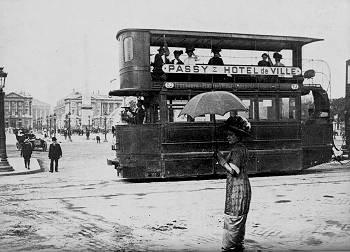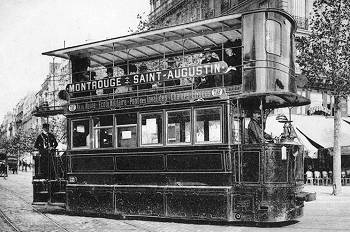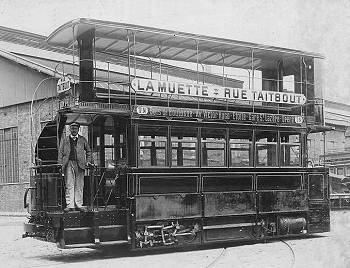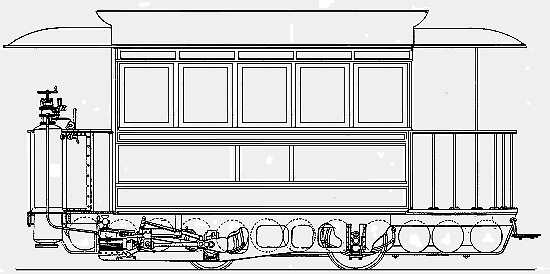 |
Compressed Air Trams
By John Prentice |
 |
Compressed Air Trams
By John Prentice |
When one thinks about tramcars one's first thoughts are usually of electric trams, then probably horse, steam and cable. Of other motive power such as petrol-electric, accumulators, gas, oil, stored steam, clockwork, compressed air, etc., these we tend to dismiss as just experiments which lasted a few months at best. In the last case, compressed air trams, although we would be correct as far as the UK is concerned, we would be quite wrong if we look at France. There were six French cities and towns using compressed air, with Paris and Nantes having over 250 of these cars, which ran for more than 30 years. This article sets out to put the record straight and to give details of that tramway oddity, the Compressed Air Tram.
 The height of Paris fashion. A well dressed lady looks on as one of the 1900 series of CGO Mékarski compressed air trams on route TJ crosses the Place de la Concorde in 1913.
The height of Paris fashion. A well dressed lady looks on as one of the 1900 series of CGO Mékarski compressed air trams on route TJ crosses the Place de la Concorde in 1913.
 Classic view of a Paris CGO 1900 series Mékarski car in 1910 on route TAF going from Montrouge to Saint Augustine.
Classic view of a Paris CGO 1900 series Mékarski car in 1910 on route TAF going from Montrouge to Saint Augustine.
 A Paris CGO 1900 series Mékarski car in 1910 with the side panels open revealing the mechanism. The destination shows route TN, La Muette to Rue Taitbout (via Avenue Victor Hugo).
A Paris CGO 1900 series Mékarski car in 1910 with the side panels open revealing the mechanism. The destination shows route TN, La Muette to Rue Taitbout (via Avenue Victor Hugo).

The measurements used in this article are in Imperial or Metric units as found in the original documents. As an approximate guide for comparing compressed air pressures between systems, 1 atmosphere = 1 kilogram per square centimetre = 14.7 pounds per square inch (p.s.i.).